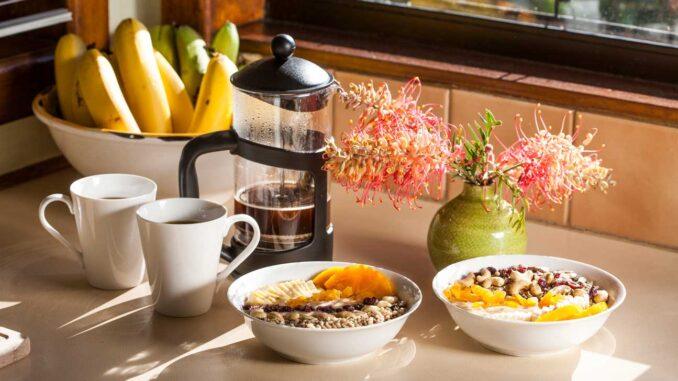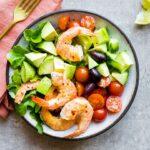
Last Updated on by lizzy
The DASH diet, or Dietary Approaches to Stop Hypertension, is a dietary pattern that is designed to help individuals prevent and control high blood pressure, also known as hypertension. This eating plan is rich in fruits, vegetables, whole grains, and lean proteins while being low in saturated and trans fats, cholesterol, and added sugars.

What is the DASH diet?
The DASH diet is a balanced and flexible eating plan that focuses on increasing the intake of key nutrients such as potassium, calcium, and magnesium, which can help to lower blood pressure. The diet encourages individuals to eat a variety of whole foods, including fruits, vegetables, whole grains, lean proteins, and low-fat dairy products.
How does the DASH diet work
The DASH diet works by emphasizing the consumption of foods that are rich in nutrients that help to lower blood pressure. The diet limits the intake of foods that are high in saturated and trans fats, cholesterol, and added sugars, which can contribute to high blood pressure and other health problems.
What foods are allowed on the DASH diet?
The diet encourages the consumption of a variety of whole foods, including:
- Fruits: Berries, apples, bananas, oranges, pears, grapes, etc.
- Vegetables: Broccoli, spinach, kale, carrots, peppers, tomatoes, etc.
- Whole grains: Brown rice, whole wheat bread, quinoa, barley, oats, etc.
- Lean proteins: Chicken, turkey, fish, beans, lentils, tofu, etc.
- Low-fat dairy: Milk, yogurt, cheese, etc.
- Nuts and seeds: Almonds, walnuts, sunflower seeds, etc.
What foods should be limited or avoided on the DASH diet?
The DASH diet recommends limiting the intake of foods that are high in saturated and trans fats, cholesterol, and added sugars. These foods include:
- Processed foods: Fast food, packaged snacks, sugary drinks, etc.
- Fatty meats: Beef, pork, lamb, etc.
- Full-fat dairy: Whole milk, cream, butter, etc.
- High-sugar foods: Candy, cookies, cakes, etc.
What are the benefits of the DASH diet?
The DASH diet has been shown to have numerous health benefits, including:
Lowering blood pressure
The diet has been shown to lower blood pressure, which can reduce the risk of heart disease, stroke, and kidney failure.
Improved cholesterol levels
The diet can help to improve cholesterol levels, which can lower the risk of heart disease.
Weight loss
The diet can help individuals to lose weight, which can also reduce the risk of various health problems.
Improved insulin sensitivity
The diet may help to improve insulin sensitivity, which can reduce the risk of developing type 2 diabetes.
Types of dash diet
The DASH diet offers several variations, allowing people to choose the version that best suits their preferences and health goals. Here are some of the most common types of DASH diets:
Standard DASH Diet
This version of the DASH diet involves eating plenty of fruits, vegetables, whole grains, and lean protein, while limiting high-fat foods, sweets, and sodium. It is recommended for people who want to improve their overall health and reduce their risk of chronic diseases like heart disease, diabetes, and cancer.
Vegetarian DASH Diet
This variation of the DASH diet is similar to the standard version, but with a focus on plant-based protein sources like legumes, tofu, and nuts. It is recommended for people who prefer a vegetarian or vegan diet, or who want to reduce their consumption of animal products.
DASH for Weight Loss
This version of the DASH diet is designed for people who want to lose weight while still maintaining a healthy diet. It involves reducing overall calorie intake while following the principles of the standard DASH diet.
Lower Sodium DASH Diet
This variation of the diet involves further reducing sodium intake to help lower blood pressure. It is recommended for people with high blood pressure or who are at risk of developing hypertension.
Mediterranean-DASH Intervention for Neurodegenerative Delay (MIND) Diet
This version of the DASH diet combines elements of the DASH and Mediterranean diets and has been shown to improve brain health and reduce the risk of Alzheimer’s disease. It includes foods like green leafy vegetables, nuts, berries, fish, and olive oil.
How does dash diet regulate blood pressure
The diet has been shown to be effective in regulating blood pressure in people with hypertension. It emphasizes whole foods that are rich in nutrients and low in sodium, saturated fat, and added sugars. This type of diet can help to lower blood pressure because it is low in sodium and high in potassium, magnesium, and calcium, which can have a positive impact on blood pressure.
Sodium is a mineral that can contribute to high blood pressure if consumed in excess. The diet recommends limiting sodium intake to no more than 2,300 milligrams per day (or 1,500 milligrams per day for people with hypertension or at risk for hypertension). By reducing sodium intake, the body can better regulate blood pressure levels.
The DASH diet also emphasizes consuming foods that are rich in potassium, magnesium, and calcium, which can help to lower blood pressure. Potassium helps to counteract the effects of sodium on blood pressure, while magnesium and calcium play a role in maintaining healthy blood vessels.
Sample 7 day Menu for dash diet
Here’s a sample 7-day menu for the diet:
Monday
- Breakfast: Greek yogurt with fresh berries and a handful of nuts
- Snack: Baby carrots with hummus
- Lunch: Turkey and avocado sandwich on whole-grain bread with a side of fruit
- Snack: Apple slices with almond butter
- Dinner: Grilled salmon with roasted vegetables and a quinoa salad
Tuesday
- Breakfast: Oatmeal with sliced bananas and a drizzle of honey
- Snack: Edamame
- Lunch: Turkey chili with a side salad
- Snack: Air-popped popcorn
- Dinner: Chicken stir-fry with brown rice and steamed vegetables
Wednesday
- Breakfast: Scrambled eggs with spinach and whole-grain toast
- Snack: Sliced cucumber with tzatziki dip
- Lunch: Chickpea salad with a side of fruit
- Snack: Trail mix
- Dinner: Lentil soup with a mixed green salad
Thursday
- Breakfast: Smoothie made with Greek yogurt, berries, and spinach
- Snack: Cherry tomatoes with mozzarella cheese
- Lunch: Grilled chicken sandwich on whole-grain bread with a side of roasted vegetables
- Snack: Pear slices with peanut butter
- Dinner: Baked salmon with a side of quinoa and steamed vegetables
Friday
- Breakfast: Whole-grain waffle with fresh berries and a dollop of Greek yogurt
- Snack: Raw almonds
- Lunch: Greek salad with grilled chicken
- Snack: Sliced bell pepper with hummus
- Dinner: Beef and broccoli stir-fry with brown rice
Saturday
- Breakfast: Scrambled eggs with spinach and mushrooms and a side of fruit
- Snack: String cheese
- Lunch: Black bean soup with a mixed green salad
- Snack: Banana with almond butter
- Dinner: Grilled chicken with roasted vegetables and a quinoa salad
Sunday
- Breakfast: Smoothie made with Greek yogurt, mixed berries, and spinach
- Snack: Raw veggies with tzatziki dip
- Lunch: Grilled shrimp with a side of roasted vegetables
- Snack: Trail mix
- Dinner: Baked chicken with a side of brown rice and steamed vegetables

Leave a Reply